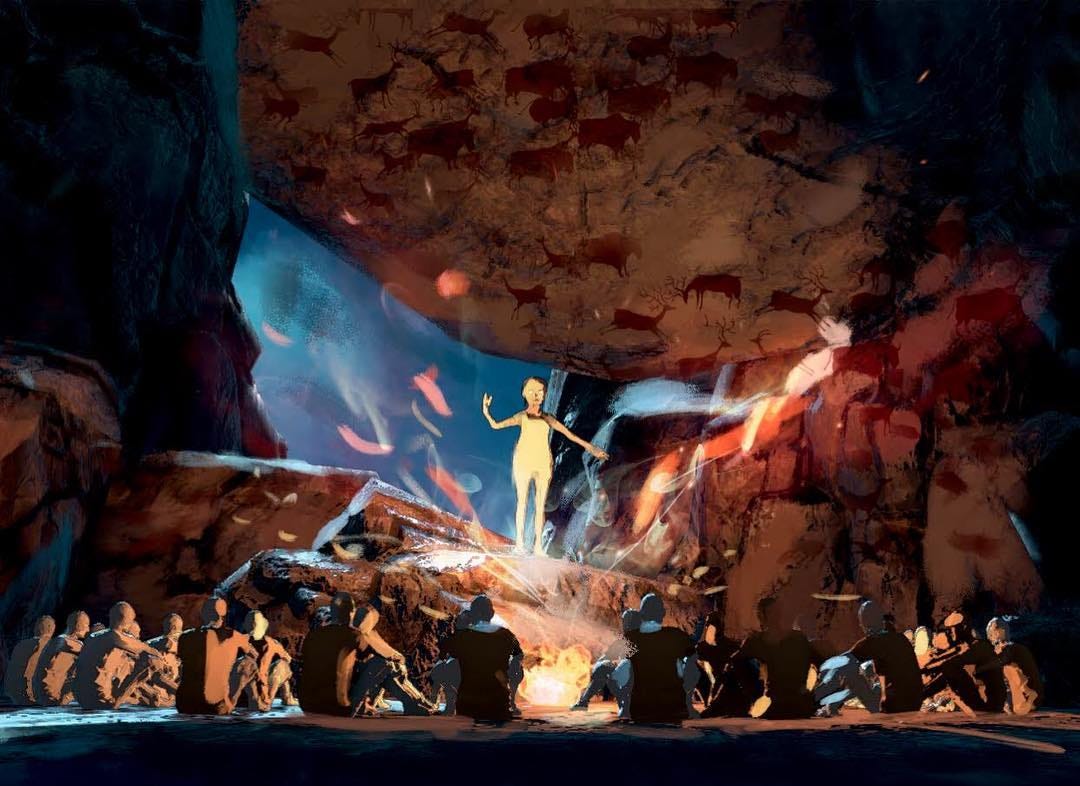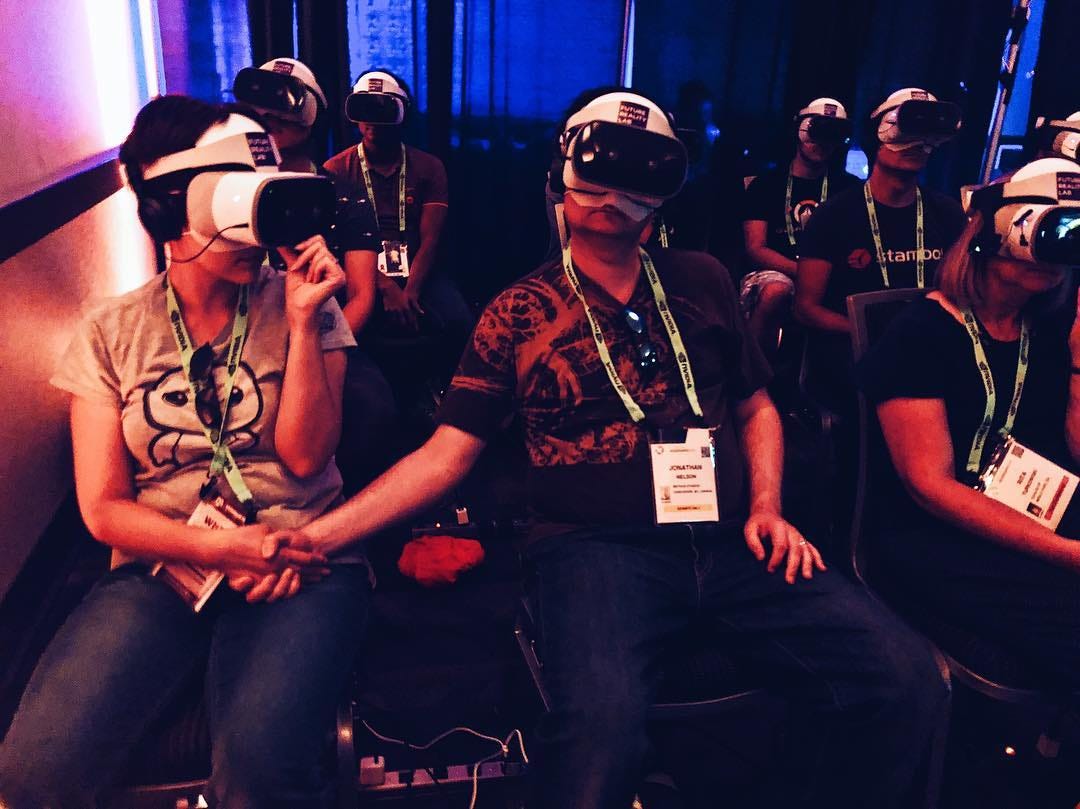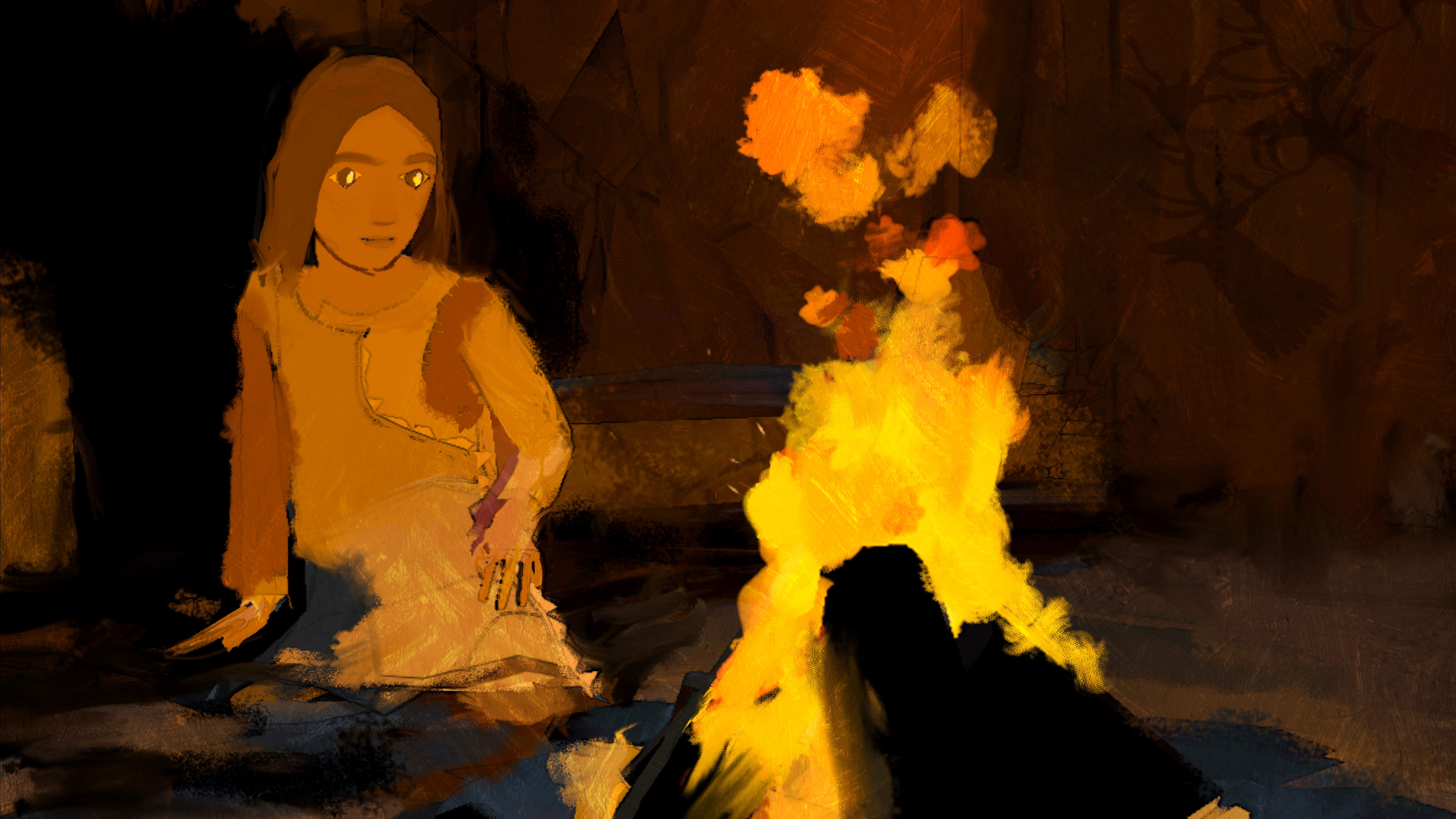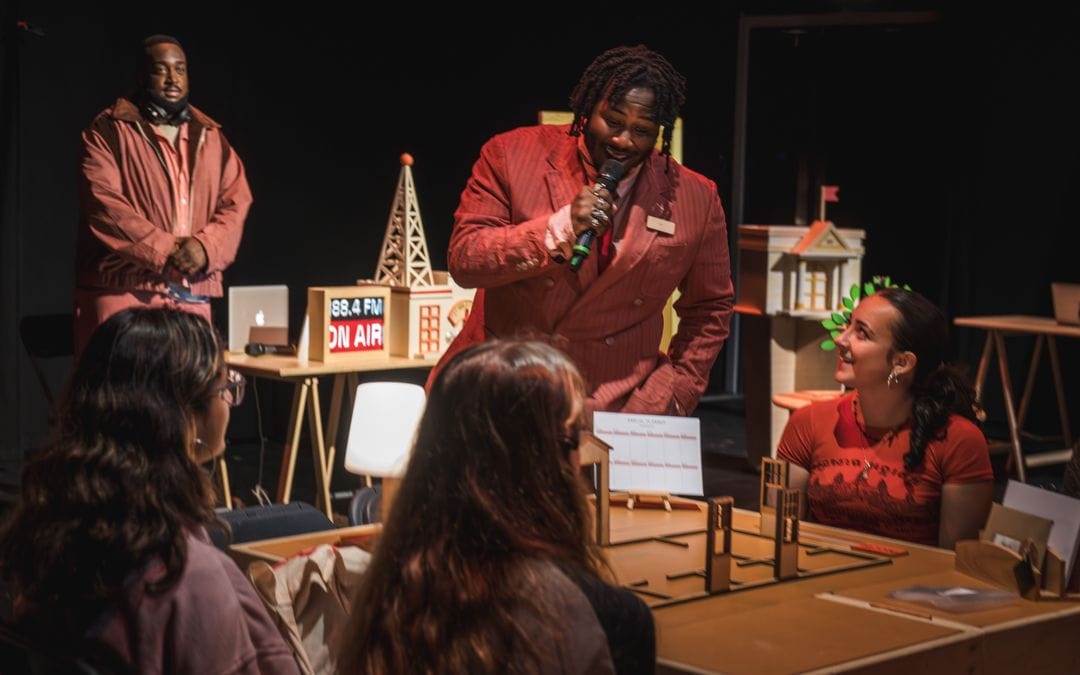
Location-based instances of virtual reality experiences — particularly at pop-up arcades or film festivals — often suffer from low throughput and agonizingly long waits, as participants wait their turn for a 10–30 minute solo immersive experience. The new XR startup Parallux, coming out of the NYU Future Reality Lab (Flock, Holojam in Wonderland), aims to change that. They’ll be showing off their short film CAVE during the Tribeca Film Festival this Spring and ushering in over a dozen participants at a time. CAVE is one of the few XR experiences that’s designed to scale from the ground up and also designed such that every participant is “present” in the piece simultaneously and can see one another.
We spoke to Kris Layng and Sebastian Herscher of Parallux over email to learn more about the CAVE experience.
No Proscenium (NP): Can you tell us a little about yourself and your background in the immersive arts?
Kris Layng (KL): My background is in theatre and film set and production design, as well as directing. I worked as a concept artist and art director in film and TV, most recently on the Netflix show, Maniac, and started doing side projects in VR. I was enamored by this new technology, and the ability to make virtual immersive spaces. I was introduced to Ken Perlin and Sebastian at the NYU Future Reality Lab, and we started a close collaboration that resulted in me joining the lab, where I’m the artist-in-residence and creative director, as well as a co-founder of our startup, Parallux. My theatre design, concept art, and film directing backgrounds have all merged in a surprising way.
Sebastian Herscher (SH): I’ve been working on my PhD at the NYU Future Reality Lab under Prof. Ken Perlin, focusing on HCI (human-computer interaction) in the XR space. I’m also the co-founder and CEO of Parallux, an XR startup focusing on technology for audiences at scale. Over the past four and a half years, I’ve worked on multiple immersive installations both from a technical and research perspective. My love for VR and AR started with the first project I worked on at the lab in 2015 — a four person collaborative drawing experience we built using Samsung GearVRs, WiiMotes, and quite a few all-nighters.
NP: What, in a nutshell, is the CAVE project about?
KL: CAVE is a coming of age story and fantasy origin story for cave paintings. Audiences are transported back to Northern Europe 12,000 years ago, when stories were told around a campfire and the history of our ancestors was written on the walls of caves. Ayara, a young woman, is struggling to decide whether to accept her role as Shaman, her tribe’s only link to the spirit world.

NP: Why did you create this experience? What inspired you?
KL: With CAVE, we set out to shake up the way people physically gather to experience stories and entertainment collectively. Our subject matter — an origin story for cave paintings told around a campfire — was chosen to reflect that point.
After attending many festivals and seeing people waiting in lines for hours to see VR content, Ken, Sebastian and I set out to create a piece of entertainment that could be shared by many people at the same time, the way theater and film operates. This is contrary to most VR entertainment, which is made for one or a few people at a time, and not able to scale to the masses.
CAVE is told through a new kind of shared VR technology built by our startup Parallux, that allows a fully immersive virtual world where each audience member sees and hears the action from their own point of view, as they would when attending a live theater or concert event. We hope what we’re doing is like the industry switch from kinetoscope to projection in 1895, one that made cinema a truly collective experience.
SH: A huge driver for us is the relative inaccessibility of VR and AR right now — either you spend hundreds to thousands of dollars on consumer hardware, or you wait for hours in a line at a festival or conference you’ve bought a ticket for.
Our industry is bottlenecked by the design of the amazing content found within it — if your maximum audience count is four to six people on a footprint that could seat fifty, then you’ll always have difficulty scaling up. CAVE was built from the start with a clear target in mind: maximize how many people can share the experience.
NP: How is the audience incorporated into the work? What kinds of things can the participants do?
Get Kathryn Yu’s stories in your inbox
Join Medium for free to get updates from this writer.
SubscribeSubscribe
SH: Each physical seat in the experience maps to a virtual seat — every audience member has a unique viewpoint of the experience, much like traditional theater. On top of that, each audience member is represented virtually as an avatar which is being driven by their movement. Essentially, part of experiencing CAVE is participating as a member of a live virtual audience. Given CAVE was our first stab at a truly large scale XR experience, we opted for less direct interactivity outside of seeing and hearing each other. This decision was made to facilitate us achieving one of our larger goals for the project: throughput. We’re exploring more complex interactivity for the audience currently.

NP: A lot of VR tends to feel quite isolating since it is done one person at a time. How many people can experience CAVE at once? What’s the most people you’ve ever had?
SH: CAVE was designed for up to 30 people at a time. We did a technical demonstration (e.g. wireframe and a whole lot of faith) of CAVE at SIGGRAPH 2018, and we were able to have audiences of 30 share the experiences in rapid succession.
KL: At SIGGRAPH 2018, we got through 2,000 people in 4 days, 30 people at a time. I don’t think there’s ever been anything like these numbers in VR.
NP: What’s the audience response been like so far to Cave?
SH: Very positive! It’s been an absolute blast. We’re incredibly excited to be bringing CAVE to Tribeca Film Festival 2019, where we will have a sixteen user installation in Tribeca Immersive from April 24th to May 5th.
KL: The audience response has been a joy to watch. People connect and interact the way they would while seeing a movie, holding hands, laughing, whispering to each other and cheering at the end — all the warmth and connection we are used to, and that’s so missing from most VR today.
NP: Who is the ideal audience member for this show?
KL: It’s for everybody, but especially families and kids.
SH: Its a low impact experience, so it’s very much for everyone — made for the age range of 6 to 96.
NP: What do you hope participants take away from the CAVE experience?
KL: I hope they see how magical it is to experience immersive entertainment with other people. It’s so much better than being alone.
SH: A feeling that they shared a story together in a new and exciting way through a collective immersive experience.
CAVE runs April 26 — May 4 as part of the Tribeca Film Festival’s Immersive Program. Tickets are $40 for a 3-hour time slot.
View all of our Tribeca Immersive 2019 coverage.
NoPro is a labor of love made possible by our generous Patreon backers. Join them today!
In addition to the No Proscenium web site, our podcast, and our newsletters, you can find NoPro on Twitter, Facebook, YouTube, Instagram, in the Facebook community Everything Immersive, and on our Slack forum.
Office facilities provided by Thymele Arts, in Los Angeles, CA.




















Discussion